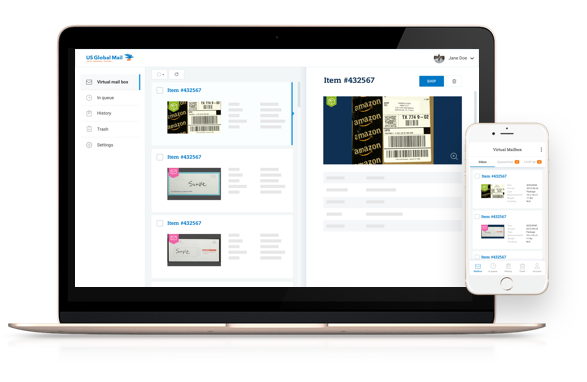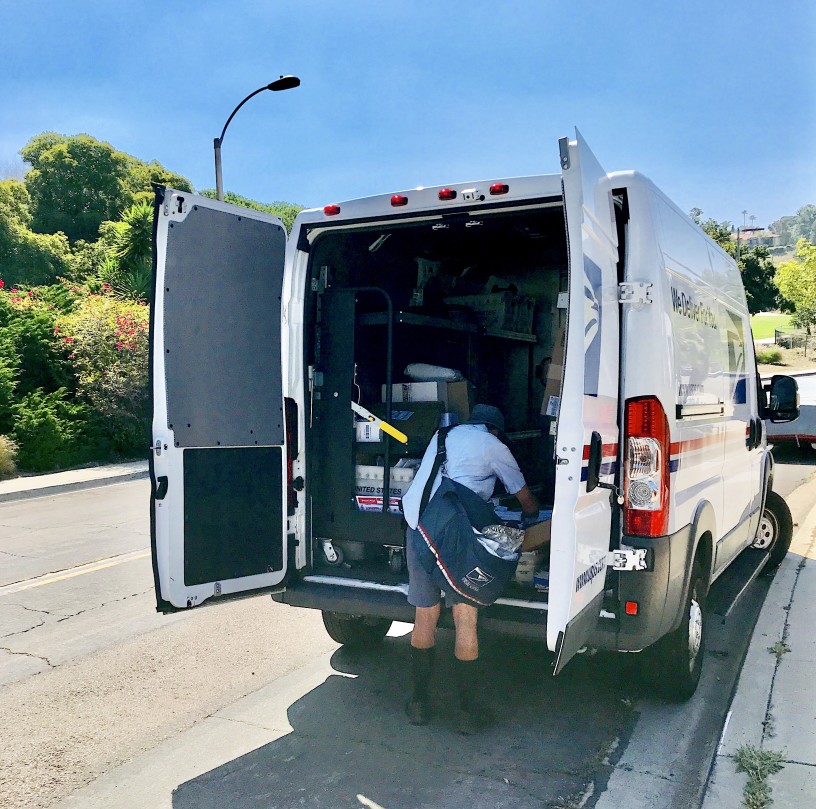Registered mail is one of the most popular mail services offered by the United States Postal Service, and it’s not hard to understand why. Providing an extra layer of protection to those that need to send important letters or documents to addresses in the United States, the beauty of registered mail is that it offers and establishes a critical chain of custody that further secures your mail as it moves through the USPS system.
With first-class mail, for example, your mail essentially “disappears” into the ether of the USPS infrastructure until it pops out on the other side and is delivered to the person that you have sent your letter to in the first place. Unfortunately, because of the nature of first-class mail, sometimes that doesn’t happen. Sometimes your mail gets lost in the shuffle. Sometimes your mail never makes it to its ultimate destination. And sometimes the post office isn’t even able to tell you what happened to your mail along the way.
Well, with Registered Mail that’s never going to be a problem again. If you’re interested in taking advantage of all that registered mail has to offer but aren’t quite sure of what exactly you get out of the (slightly higher) price point, we’ve put together this quick guide. By the time you are done with all the information that we share below you’ll not only have a much better idea of everything that registered mail brings to the table but you’ll also know when registered mail is the right solution for you and when you can get away with still sending things first-class mail through the USPS.
Shall we get started?

What is Registered Mail?
Registered mail in the United States is different from traditional first-class mail in a couple of different ways, but the most obvious (and maybe most important) difference has to be the chain of custody created by this kind of mail in the first place. You see, when you drop a first-class letter in the mail (or when you drop it off at the post office) it is only tracked internally through the USPS infrastructure at different intervals. It isn’t carefully watched, it isn’t carefully recorded as it moves through the system, and there is no external tracking that you can take advantage of with first-class mail (unless you are willing to pony up a bit of extra cash to take advantage of tracking systems).
With registered mail, however, you are talking about something else entirely. Registered mail not only provides you with a confirmation that the mail has been sent out to a recipient but it also tracks a chain of custody as that mail piece moves through the USPS infrastructure and eventually arrives at the doorstep of your intended recipient, too. You are provided with a piece of tracking information that can be used to physically watch every update of your mail piece as it moves to the platform. You’re able to see where your registered mail is as it moves through its journey, watching (basically in real time) as it goes through the USPS system to get to its final destination.
When it reaches its final destination you’re also provided with a delivery confirmation, not only confirming that the mail piece has arrived but also (if you elect for signature receipt) confirming that someone at that location physically received and signed for your piece of mail as well. On top of all of that (as if that wasn’t reason enough to consider taking manage of everything that registered mail brings to the table) you’re also going to get prioritized delivery when you go down this road.
When Did Registered Mail Begin?
Interestingly enough, even though the United States Postal Service (or some version of the Postal Service) had been responsible for delivering mail to Americans all over the country since before we even were Americans, registered mail – and even the idea of registered mail – wasn’t actually created until 1855. In 1855 some enterprising young member of the U.S. Postal Service decided to come up with the idea of registered mail, providing confirmation not only that a piece of mail have been sent but also requiring a “green card” to be signed and then returned to the sender so that they knew their mail had arrived at its ultimate destination. This opened up a floodgate of new services that the USPS pioneered, all because this one change really helped to further secure and cement the USPS as a safe platform to send mail through.
In 1864 (in the heat of the Civil War) the registered mail system allowed for the creation of a Postal Money Order Service – a service that still exists today. Because US citizens were now comfortable with the fact that registered mail proved that something had been sent and that something had been received via registered mail they now felt comfortable sending money through the system, too. By 1867 this service expanded out to international addresses, with both registered mail and international money orders being sent through the USPS. Special delivery services were invented in 1885, parcel post and Collect on Delivery services arrived in 1913 alongside different mail insurance options, and certified mail – taking registered mail to the next level – would be created in 1955, too.
To say that registered mail really ushered in a whole new era of innovation at the USPS would be the understatement of the organization. Registered mail and its inception in 1855 really changed the way that the USPS operated from that day forward, helping to shape and mold even what the post office will become in our modern times.

What Are the Benefits of Registered Mail?
Obviously there are a lot of benefits to using registered mail (some of which we have already mentioned), more than enough benefits to outweigh the extra premium cost that this mail delivery system charges. For starters, registered mail requires a proof of mailing – and sometimes that is reason enough to use this program specifically. A lot of businesses like to take advantage of registered mail because of the proof of mailing it provides, particularly those that are sending business-to-business correspondence as well as those the legal world that need to create a chain of custody or establish important timelines for the documents that they send out. Dropping a letter in the mail has absolutely zero proof that it was sent, let alone that it was sent on the day or time that an individual said they sent it out on. When you send something registered mail you have that proof, that chain of evidence, that you can present – a huge benefit for sure.
Secondly, the built-in mail tracking provided with most registered mail services (and available as an extra add-on when it isn’t included) is another great reason to leverage this particular premium delivery option. Instead of having to wonder about where your mail is as it moves through the USPS system, or having to check in with your recipient every day to see if it has arrived, both you (the sender) and the recipient can use the tracking information attached to the package or parcel to watch as it moves through the USPS infrastructure.
Program delivery is another obvious benefit, closely matching the benefit of proof of sending a piece of mail out in the first place. You’ll know for certain the person you have sent mail to has received what you are sending without any questions, and you’ll be sure that the right person has physically received it thanks to the signature confirmation attached.
Higher priority delivery is a “hidden benefit” of registered mail that a lot of people aren’t aware of for one reason or another. It’s not necessarily true that your registered mail is going to be intentionally moved through the USPS infrastructure faster just because it is registered mail – but when the USPS knows that your tracking your mail, that you’re watching as it moves through the system, and that you are aware and alerted a bit reaching its final destination they definitely move things along a little quicker. You’re also always paying a premium compared to first-class mail to get your mail to its final destination. That incentivizes the USPS to move it along as well.
Finally, there are going to be records kept of registered mail (when they are sent, who they are sent from and who they are sent to, as well as when and who receives them) that you can access for up to 24 months from the day that the registered mail piece was sent out. This means that you don’t have to be as meticulous with your record-keeping as you might have otherwise been. Accidentally losing your registered mail information doesn’t mean that you lose the chain of custody evidence that you needed, either. You’ll have the opportunity to call the USPS postal office in your local area and have them help you track down this information, always 100% free of charge. Now, if you’re looking for information about registered mail sent out longer than two years ago you may be in a bit of a pinch. But as long as your within that 24 month window you should be good to go.
What’s the Difference Between Registered and Certified Mail?
There are a couple of important differences between registered and certified mail that you are going to want to be aware of, but the biggest difference is the extra insurance included with registered mail packages, parcels, and envelopes.
Certified mail is a bit more of a streamlined offering compared to registered mail, really only confirming that the piece of mail has been sent out and confirming that the mail has been received by the person you intended it to be received by. Registered mail, on the other hand, includes extra insurance to further protect and secure that piece of mail as it moves through the USPS infrastructure. It’s also tracked every step of the way – sometimes even sequestered from other pieces of mail – giving you a lot more peace of mind and a lot more security knowing that your mail is going to get where you intend it to on time. Certified mail is significantly less expensive than registered mail because it does not include the extra insurance and because it doesn’t have to be handled in a special way compared to first-class mail.
Whether or not certified mail or registered mail makes the most sense for you is going to be entirely dependent on your specific situation, something only you will be able to determine when you go to send this mail the first place.

Consider US Global Mail as Your New Modern Mailbox
Regardless of whether or not you are going to be sending mail via first-class mail, certified mail, or registered mail, you still need to be sure that you have a modern mailing solution set up to receive packages, parcels, and envelopes.
Traditional third-party mailbox services are often saddled with the same hassles and headaches that USPS PO boxes have – inconvenient hours of operation, inconvenient physical locations, and an inability to really understand what’s in your box until you actually go there and check. Thankfully though, with the more modern mailbox solution of US Global Mail, those problems are problems of the past! The best virtual mailbox service available today, and one of the most trusted modern mail solutions in the United States for the past 20+ years, there’s a reason why thousands of people trust and rely on US Global Mail to help them out.
Not only do you get a physical street mailing address with this virtual mailbox service (guaranteeing deliverability for all your packages, parcels, and letters) but you also get mail scanning, mail forwarding, and even check depositing solutions – and so much more – included as well! To learn more about everything that US Global Mail has to offer, and to find out if these services are right for you, check out the information that they make available on their website today.







